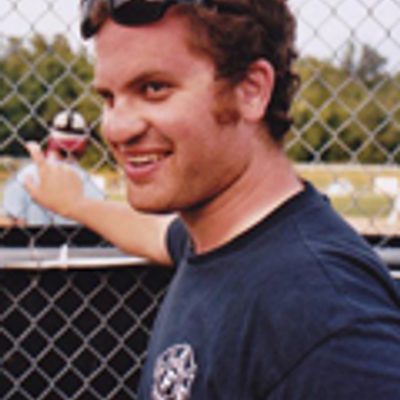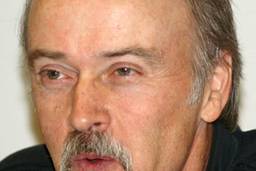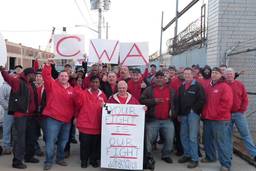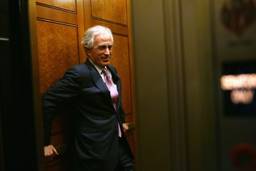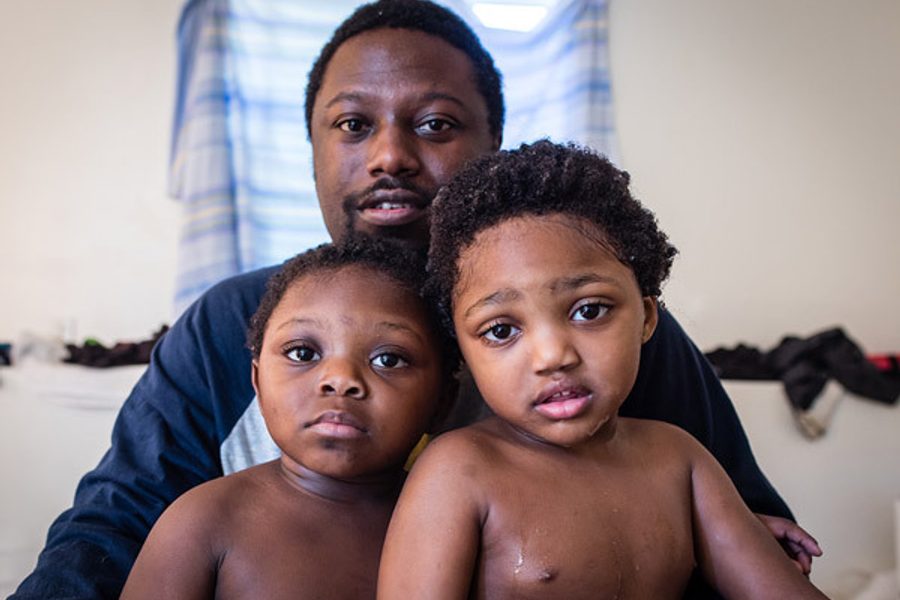
Earlier this month, a terrifying event occurred that made me wonder if I had been lying to myself about something important.
As a Jew, I’ve always prided myself on my family and people’s traditions on being progressive about matters of race. Indeed, my father, a very dark-skinned Jew who was once called the n-word by a scab trying to break through a picket line in the 1980s, insisted that I attend the last high school in America still under federal integration order—Woodland Hills High School in Pittsburgh, Pa. There, I was schooled at a young age in the literature of Zora Neale Hurston, Ralph Ellison and James Baldwin.
In some ways, being around black culture saved me as I grew up struggling with depression. Heck, at my 10th birthday party, only black kids showed up. I was an awkward kid with Asperger’s Syndrome who was intensely bullied, and it seemed when I was young that the members of the African-American community in our working-class Pittsburgh school were more accepting than my white classmates of a very weird Jew like me. It was like they knew what it was like to feel different from everyone else.
Eventually, as I got older and grew into elite circles of academia and intelligentsia, my circle of friends became dramatically whiter. Still, I always thought of myself as being a dedicated anti-racist. But discovering a black man having a heart attack a few weeks ago made me wonder if I had been lying to myself all along.
On a sunny Saturday afternoon earlier this month, I was in a hungover stupor and needed to go for a walk through the Washington, D.C. streets to clear my head. As I was ready to escape into the world of the Yo La Tengo playing on my iPhone, I spotted a black man lying on the corner of Park Road and Klingle, leading into Rock Creek Park.
A number of joggers and other white folks passed by the black man as he lay flailing around on top of a bicycle. It’s not an uncommon site in my increasingly gentrifying neighborhood of Mt. Pleasant to see dark-skinned homeless people passed out on the streets. As other white people walked by the struggling black man, who looked poorly dressed and disheveled, I stopped on the other side of the street and tried to assess if the situation was dangerous or not before approaching him.
Finally, after seeing an elderly white woman try to help the man up, I decided to cross the street so she wouldn’t have to deal with him on her own.
I asked the guy if he was okay. “Oh, I am just a little tired and taking a rest,” he replied in a West African accent. Having lived in Brazil, I was used to cultures that seemed absurdly laid back to me as an American, so I thought it was plausible that in some societies, lying down on the sidewalk is just what you do when you are middle-aged and exhausted.
As I started to walk away, I saw the elderly woman attempt to help the guy stand up for a second time. He stumbled back into the street, though, this time hitting his head. I approached the pair again and tried to talk to him, but he went between being communicative to being entirely unresponsive. Given that the guy was lying in the middle of a public road and struggling to speak, I hadn’t ruled out the possibility he might be drugged up.
Suddenly, a car stopped. A tall, thin white man in his 60s, wearing a polo shirt and a belt with little sailboats on it, got out of his car and walked over to the guy.
“Let me take his pulse,” the newcomer said as he touched the man’s wrist. A crowd of people had begun to assemble and offer suggestions, but he ignored them. After a few moments, he said, “I think he’s having a heart attack.”
“How do you know?” I asked, startled.
“I am an orthopedic surgeon,” he said. “I was just driving back from a surgery and saw this guy on the road and stopped.” He looked more like he was coming back from a round of golf at the country club.
The man on the street was sweaty and disheveled not because he was a drug addict, but because he had been working out and collapsed. In that instance, my suspicion of the man turned to concern and panic. It hit me that we didn’t need to call the police—we needed to call an ambulance.
Someone did, and the rest of us started to do everything we could to help him. We collected his things, made sure the paramedics wouldn’t step on his glasses when they arrived and tried to ask him if there was somebody in his family that we could call. Someone else went to go fetch a glass of water. The country club doctor stayed at the guy’s side, patting him to comfort him as the man slipped through states of disorientation caused by a lack of oxygen going to his brain.
While we waited for an ambulance, everyone in the assembled crowd of yuppie white folks tried to piece together the identity of this mysterious black man as he slipped in and out of consciousness at our feet.
“He’s got a Fannie Mae shirt on and a Freddie Mac jacket,” said the country club doctor. “Maybe he works there.”
During a brief time of lucidity, the man managed to tell us he lived only a block away from me. Despite living down the street from this guy for nearly half a decade, I had never met or spoken to him. He was in incredible pain, and we were all he had: a group of total strangers trying to comfort him. He was my neighbor, and he was dying. And only a few minutes before, I had suspected the guy of being a vagrant.
After five or ten minutes, the ambulance showed up. The emergency responders confirmed that the man was having a mild heart attack, which had made him appear as if he could be on drugs.
As we waited for the ambulance to take off, members of the crowd began to remark on how incredible it was that we were able to come to the man’s aid in his time of need.
“Can you believe that how we, as a bunch of strangers, were able to come together and help this guy?” said the country club doctor. “Only in America. Only in America.”
“This is what Mt. Pleasant is all about,” said a hippie-looking woman in her 40s. “This is what this neighborhood is all about.”
I even posted a photo of the crowd attending to the downed man on Instagram, with a caption echoing the woman’s sentiment: “I didn’t wake up this morning and think I’d have to call an ambulance on a neighbor having a heart attack, but that’s what being a neighbor in Mt. Pleasant is all about.”
Later, though, when my dad called me to congratulate me on doing the right thing and saving the guy’s life, I told him the truth: I had never felt so ashamed to be a white man in my entire life. Here were what could be this man’s last moments, and I suspected him of being a criminal nuisance. What the fuck?
If I collapse on the street from a heart attack, you can guarantee that folks are going to stop and try to help me. But if you are a black guy wearing workout clothes and you collapse in a gentrifying neighborhood, you may be a goner.
“Only in America,” the country club doctor said. Yes, there was something about how we helped a total stranger instead of escaping into the selfishness of our own daily routines that made me proud as an American. But what about all those people who simply walked by before the crowd eventually gathered—what does that say about America?
That’s America: a place where total strangers can come together to help a strange black man in what could be the last moments of his life, but they still might still waste precious moments writing him off because of their own prejudices.
That’s America: a land of intense contradiction, but still, I hope, a lot of love.
Please consider supporting our work.

I hope you found this article important. Before you leave, I want to ask you to consider supporting our work with a donation. In These Times needs readers like you to help sustain our mission. We don’t depend on—or want—corporate advertising or deep-pocketed billionaires to fund our journalism. We’re supported by you, the reader, so we can focus on covering the issues that matter most to the progressive movement without fear or compromise.
Our work isn’t hidden behind a paywall because of people like you who support our journalism. We want to keep it that way. If you value the work we do and the movements we cover, please consider donating to In These Times.
Mike Elk wrote for In These Times and its labor blog, Working In These Times, from 2010 to 2014. He is currently a labor reporter at Politico.
